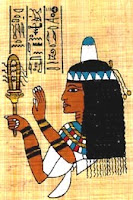| Name | Image | Description | Video |
|---|---|---|---|
| Cymbal |  | Cymbals (Fr. cymbales; Dutch "Bekkens"; Ger. Becken; Ital. piatti or cinelli; Por. pratos), are a modern percussion instrument. Cymbals consist of thin, normally round plates of various cymbal alloys. Cymbals are used in modern orchestras and many military, marching, concert and other bands. They are one of the two instrument types that form the modern drum kit. The origins of cymbals can be traced back to prehistoric times. The ancient Egyptian cymbals closely resembled our own. The British Museum possesses two pairs, thirteen centimetres in diameter, one of which was found in the coffin of the mummy of Ankhhape, a sacred musician. | |
| Darbuka |  | Darbuka (also goblet drum or chalice drum) is a goblet shaped hand drum used in Arabic, Assyrian, Persian, Balkan, Armenian, Azeri and Turkish music. Its thin, responsive drumhead and resonance help it produce a distinctively crisp sound. There are two main types of goblet drums. The Egyptian style has rounded edges around the head, whereas the Turkish style exposes the edge of the head. The exposed edge allows closer access to the head so finger-snapping techniques can be done, but the hard edge discourages the rapid rolls possible with the Egyptian style. | |
| Harp |  | The harp is a stringed instrument which has the plane of its strings positioned perpendicular to the soundboard. All harps have a neck, resonator and strings. Some, known as frame harps, also have a forepillar; those lacking the forepillar are referred to as open harps. The oldest depictions of harps are from 4000 BCE in Egypt and 3000 BCE in Persia. The image shows a double-strung harp. It consists of two rows of diatonic strings one on either side of the neck. | |
| Mizmar |  | In Arabic music, a mizmar (Arabic: مزمار) is any single or double reed wind instrument. In Egypt mizmar usually refers to a surnay. | |
| Riqq |  | The riqq (also known as riq or rik) is a type of tambourine used as a traditional instrument in Arabic music. It is an important instrument in both folk and classical music throughout the Arabic-speaking world. It traditionally has a wooden frame (although in the modern era it may also be made of metal), jingles, and a thin, translucent head made of fish skin (or, more recently, a synthetic material). Although in the West the tambourine is generally considered to be a simple rhythm instrument suited for unskilled performers, riq players are capable of great subtlety and virtuosity. The riq is used in Egypt, Iraq, Lebanon, Palestine, Sudan, and Syria; in Libya, where it is rare, it is called mriq. It is between 20 and 25 cm in diameter and is now effectively a man's instrument. | |
| Sistrum |  | A sistrum is a musical instrument of the percussion family, chiefly associated with ancient Egypt. It consists of a handle and a U-shaped metal frame, made of brass or bronze and between 10 and 30 cm in width. When shaken the small rings or loops of thin metal on its movable crossbars produce a sound that can range from a soft tinkling to a loud jangling. | |
| Trumpet |  | The trumpet is a musical instrument in the brass family. It has the highest register in the brass section. A musician who plays the trumpet is called a trumpet player or trumpeter. The most common trumpet by far is a transposing instrument pitched in B flat - the note read as middle C sounds as the B flat 2 semitones below - but there are many other trumpets in this family of instruments. The most common type is the B-flat trumpet, but C, D, E-flat, E, F, G and A trumpets are also available. The oldest trumpets date back to 1500 BC and earlier. The bronze and silver trumpets from Tutankhamun's grave in Egypt, bronze lurs from Scandinavia, and metal trumpets from China date back to this period. |
Prev Top Next |